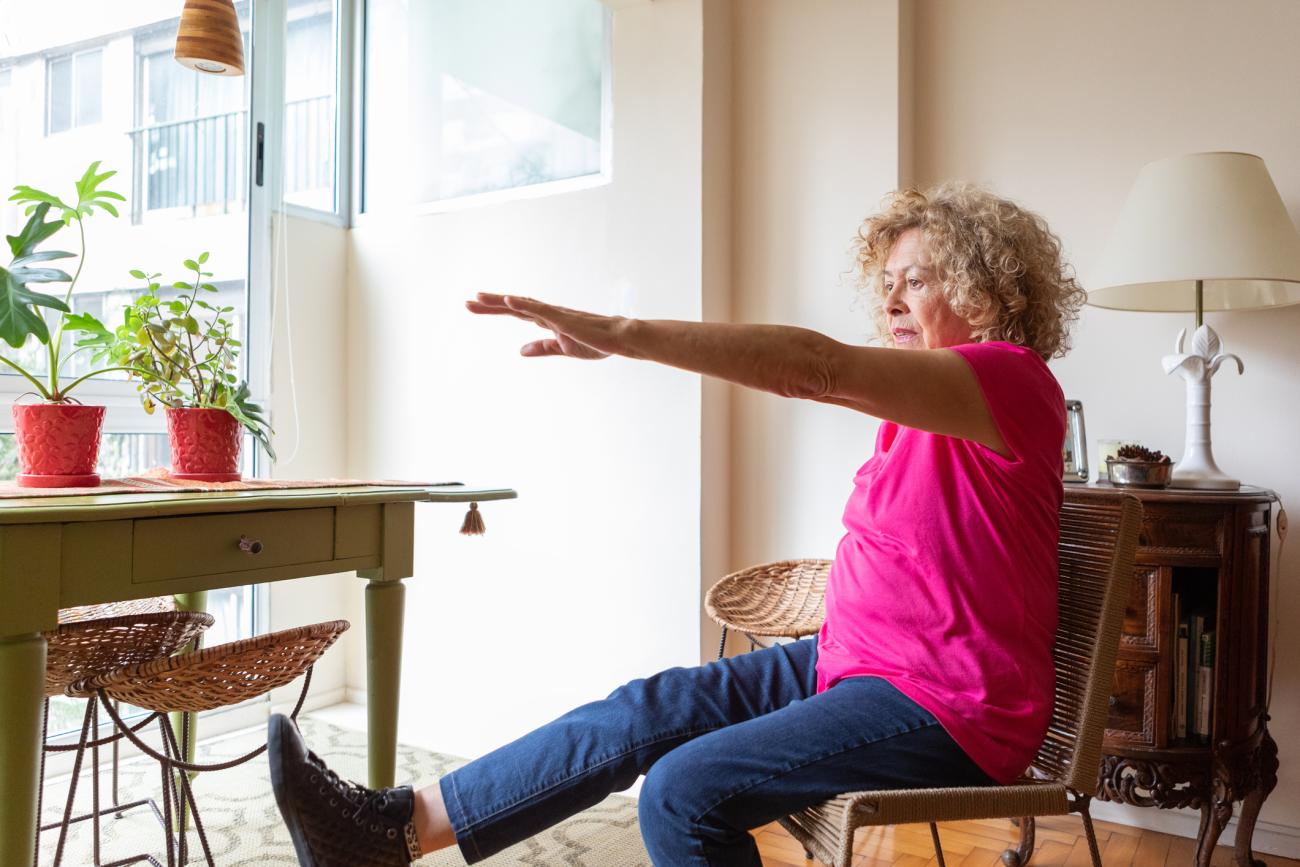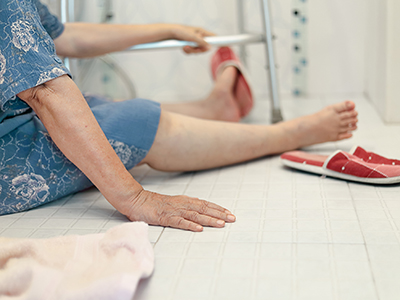
A strength and balance program has the potential to dramatically lower the falls risk of older adults with slow gait speeds.
Falls are the leading cause of injury and hospitalization among adults over the age of 65 in Canada. Worldwide, about a third of older adults fall each year, with many requiring medical care to recover or losing their capacity to live independently. New research led by Vancouver Coastal Health Research Institute (VCHRI) investigator Dr. Teresa Liu-Ambrose and postdoctoral fellow Dr. Jordyn Rice suggests that a home-based exercise program could significantly reduce the risk of future falls in older adults with history of falls, particularly among those with slow walking speed.

Published in the Physical Therapy Journal, the study examined whether gait speed — how fast a person normally walks — could help identify who is most likely to benefit from a progressive strength and balance training exercise program. The study involved 334 older adults over the age of 70 who had experienced a fall and were receiving care at the Vancouver General Hospital Falls Prevention Clinic.
Participants were randomly assigned either a home-based exercise program focused on strength and balance or to standard care recommendations that did not involve a targeted strength and balance program. Those in the exercise group completed individualized training with periodic follow-ups to monitor progress and ensure safety.
The research team found that participants with slow gait speeds below 0.8 metres per second experienced approximately 35 per cent fewer falls over six months — the halfway mark of the study — compared to those with normal gait speeds of over 0.8 metres per second.
“This significant improvement shows that there was a clear benefit for individuals in the home-based exercise program,” says Rice.

However, at the 12-month end point of the exercise intervention, adherence slowly declined, notes Liu-Ambrose. This, she says, highlights the importance of designing and implementing exercise interventions with strategies to promote adherence over time.
“To reap the full benefits of exercise, you need to keep doing it.”
These findings suggest that slower gait speeds among older adults could serve as an important risk factor for falls and target for prioritized fall-prevention resources and tailored interventions, says Liu-Ambrose.
Tailoring interventions to improve quality of life
Gait speed is considered the “sixth vital sign” in geriatric medicine and is increasingly recognized as a simple yet powerful indicator of health and function in older adults. Slower walking speeds are often linked to muscle weakness and poor balance, along with a greater risk of hospitalization, disability and mortality.
“Gait speed is a feasible measurement tool to integrate into everyday clinical or community practice,” shares Liu-Ambrose. “All we need to calculate a person’s gait speed is four metres of space and a stopwatch.”
Notably, participants with slower gait speeds also showed improvements in mobility and processing speed — how quickly the brain takes in and responds to information. These findings support growing evidence that physical and cognitive systems interact to influence fall risk.
“There is a strong connection between our physical and cognitive health,” explains Liu-Ambrose. “Exercise is an excellent approach for fall prevention because it supports both the body and the brain.”

“Our study suggests that this group of older adults should receive priority access to physical therapy services to retrain their strength and balance,” says Liu-Ambrose. “These individuals also need further support to help them adhere to the exercise program over the long-term.”
Home-based programs offer an accessible way to deliver these benefits. They allow early and ongoing intervention following someone’s first fall — a period when individuals are at highest risk of experiencing a subsequent fall — and can help older adults remain independent for longer.
“Reducing falls is critical to prolong an older adult’s ability to continue living in their own home independently.”
Future research could explore ways to enhance exercise program adherence over time, integrate gait-speed assessment more routinely into clinical and community health settings and expand access to evidence-based exercise programs, Liu-Ambrose says.
“It is never too late to benefit from exercise.”


